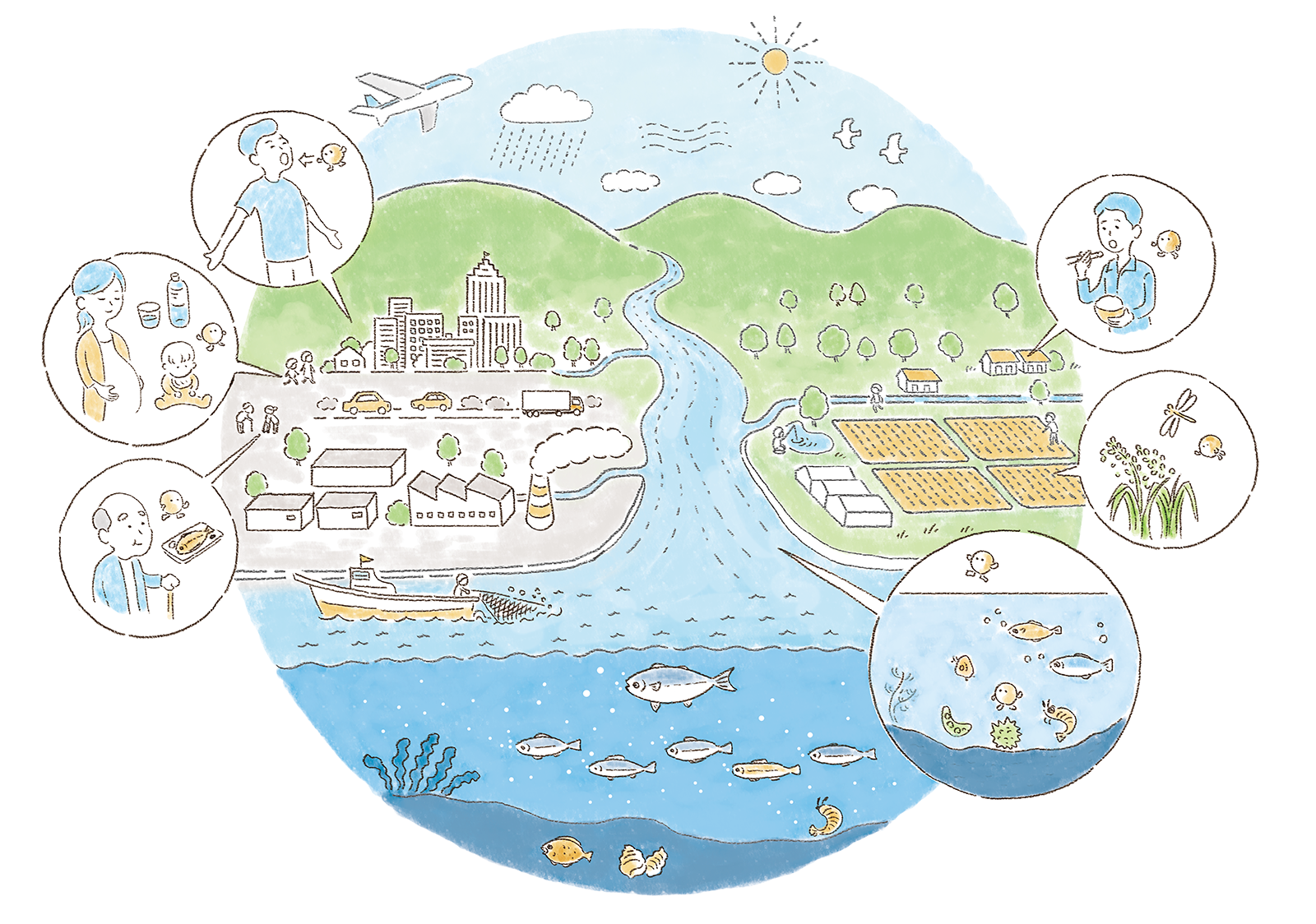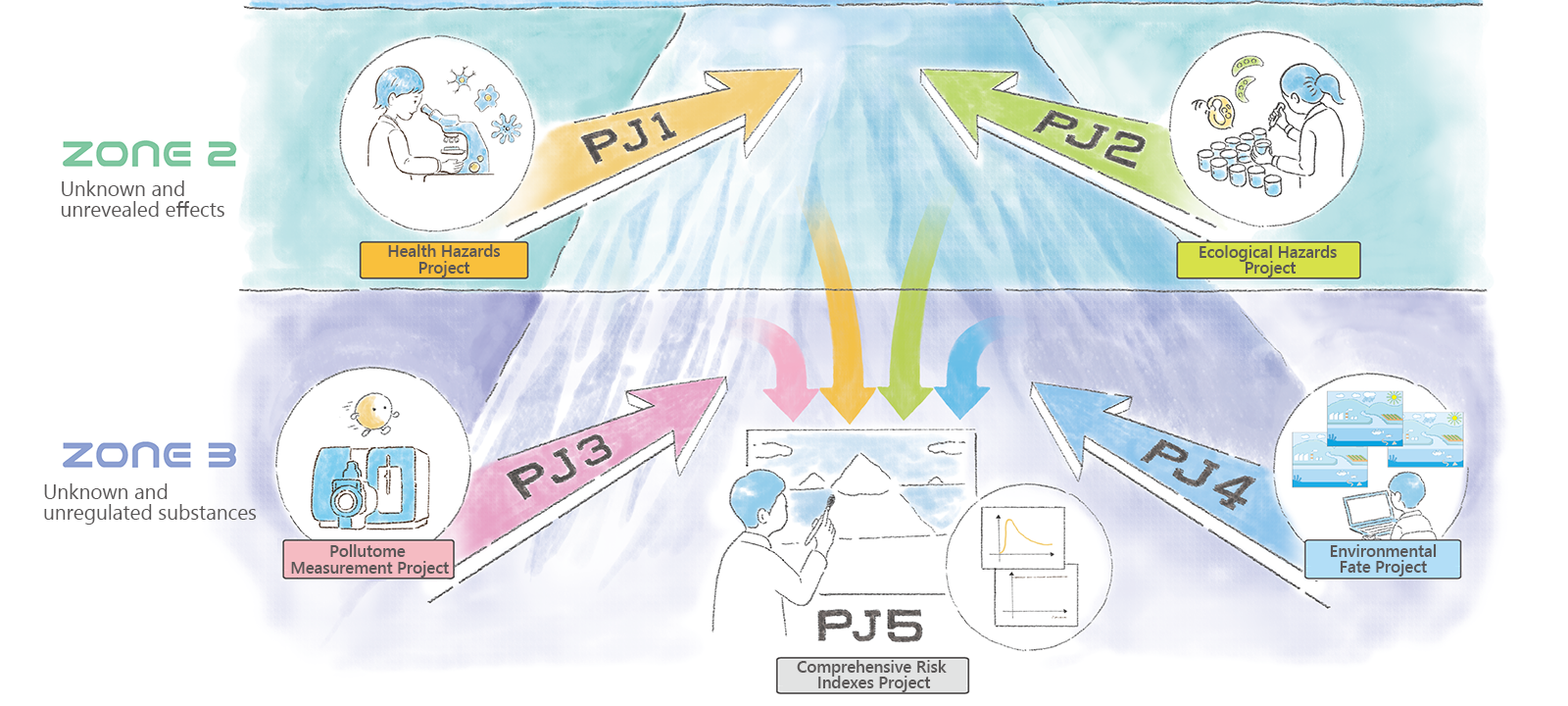
In the Comprehensive Environmental Risk Research Program...
We are using millions of chemical substances to make our daily lives convenient and comfortable but part of these could be released into the environment to cause adverse effects on human health and/or eco-system.
In contrast, there are still huge unknown issues about the various effects on various organisms and how much of what chemicals remain in the environment, which is like what we have known is only “tip of the iceberg”.
In this research program, we focus to understand not only on the surface of the iceberg (Known pollutome: Zone 1), but also on the portion under the water (Unknown and unrevealed effects: Zone 2 and Unknown and unregulated substances: Zone 3), we tackle this challenging problems from five different directions (Research Projects: PJs).
5 projects in the Comprehensive Environmental Risk Research Program
- PJ1 Health Hazards Project
Health hazard assessment considering the real-life environment and vulnerabilities - PJ2 Ecological Hazards Project
Ecological hazards and factor analysis considering vulnerabilities - PJ3 Pollutome Measurement Project
Comprehensive pollutome measurement - PJ4 Environmental Fate Project
Modeling the environmental fate of the pollutome - PJ5 Comprehensive Risk Indexes Project
Development of comprehensive health risk and ecological risk indexes

Comprehensive Environmental Risk Research Program
Research Program on Comprehensive Assessment and Management of Human and Ecological Health Risk Caused by Chemicals and Other Pollutomes.
In this program, we are conducting research to promote the comprehensive risk assessment and management of chemicals and the total of all forms of pollution that can harm human and ecological health (i.e., the pollutome).
To assess and manage the greater part of chemicals originating from human activities, we expanded the target chemicals to all chemicals of concern and considered vulnerable groups and life stages of humans and other organisms.
In addition, we upgraded our comprehensive measurements and mathematical models to better assess those effects and risks that have been hard to quantify.
As a result of these efforts, we are helping to establish comprehensive health risk indexes and ecological risk indexes.


